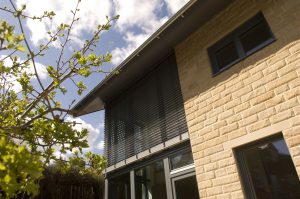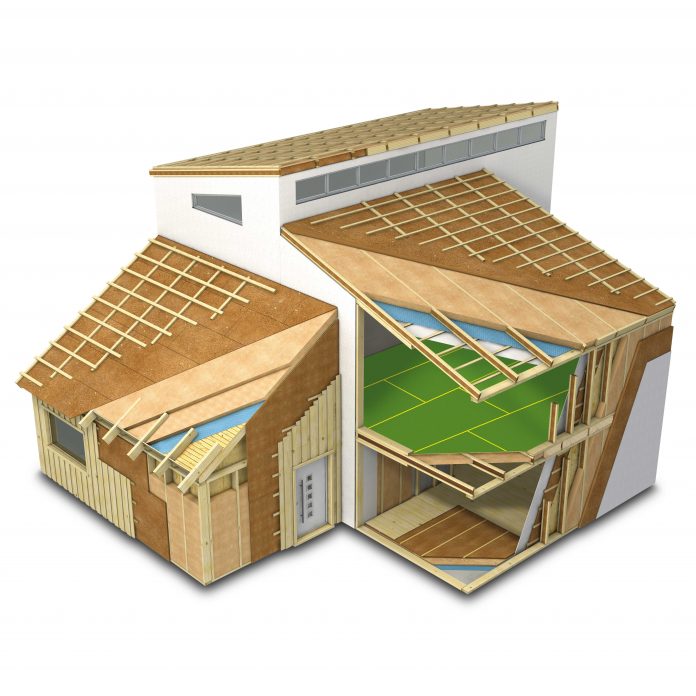Adrian Judd, director of Steico, argues Building Regulations need to tighten up so that we build healthy buildings
A healthy building is one which is well-ventilated and vapour-permeable, cheap to keep both warm or cool, has high indoor air quality and maximises natural light.
Reasons to strive for a healthy building are numerous. However, current building regulations focus on structural and cost-effective performance with no standards in place to regulate the ‘healthiness’ of the building. Without any legal requirements, people aren’t aware of the many benefits of choosing healthy building materials.
Nordic standards
To build a home that is both energy efficient and promotes good indoor air quality is well beyond the minimum building standards in the UK. This is where Nordic countries lead the way by monitoring and measuring indoor air quality. As yet, we have no British equivalent standard.
Back in 1978, a framework by the Nordic Committee included – in its standard guidelines – a regulation for indoor air quality. As part of this, all buildings (dwellings and commercial buildings alike) must have mechanical ventilation. UK guidelines on the other hand, contain no such standard.
Swedes and Norwegians appreciate how key indoor air quality is to humans’ wellbeing. That’s why the UK should have such a standard, as current regulations don’t cover the comprehensive performance of a building.
In densely populated urban areas, often opening the doors and windows does more harm than good. It invites more air pollutants to enter – eg traffic pollutants – than those it flushes out, such as cleaning fluid fumes and gases emitted from synthetic materials eg sofas, UPVC windows.
Nowadays, we’re spending more time indoors, which means there’s more opportunity for our buildings to have a determinantal effect on our health whether it’s our workplace or our home.
Passivhaus – healthy building
Passivhaus buildings minimise the energy they use for their heating and cooling, remove as little of their surroundings as possible and aim for lower CO2 emissions than the average household.
A house built to the current UK Building Regulations has its energy split – 53% on space heating, 28% on power and 19% heating water. A Passivhaus construction, however, splits it by 56% power, 32% hot water and 12% space heating.

Despite it being one of the UK’s lowest-energy homes, one of the first Passivhaus built in the UK, Denby Dale in West Yorkshire (GreenBuildingStore.co.uk), was only awarded Level 3 cat C under EPC (Ene 1: Dwelling Emission Rate – the mandatory portion of the code’s energy category).
Such a result would suggest that the SAP methodology of the time (SAP 2005) was not accurately estimating the carbon dioxide emissions of low energy housing.
How low can you go?
Building Regulations are a set of minimum standards. None of the 14 sections are dedicated to quality performance delivery.
For example, a new build terraced house with a tested result of 9.1 m3/ (h.m2) @50Pa passes Building Regulations. However, an external wind at an average of 20mph minutes can exchange all the heated air from within the building in just six-and-a-half minutes. This could result in an increase in heating bills of around 50%.
A resolution to this would be if Building Regulations helped to increase the quality of insulation, and therefore airtightness, with new builds to save both the money and health of the occupants. We call on the government to consider how a change in the current Building Regulations would have the beneficial effect of helping both to save energy and promote a healthier internal environment for occupants.
In an era where the average household pays £1,163 per year for its fuel (both electricity and gas), many could halve that if their home was well-insulated with natural materials. It would also be a healthier home. As the cost of chemicals rises, so do the prices of synthetic materials that are used in their manufacture.
In comparison, natural materials are both affordable as well as quick and easy to use. For more information on how you can build healthy buildings, or to sign up to the healthy building campaign to show your commitment to healthy building, visit www.steico.com/en/news/campaign/.
Adrian Judd
Director
Steico
Tel: +44 (0)1727 515 120
Twitter: @SteicoUK

















